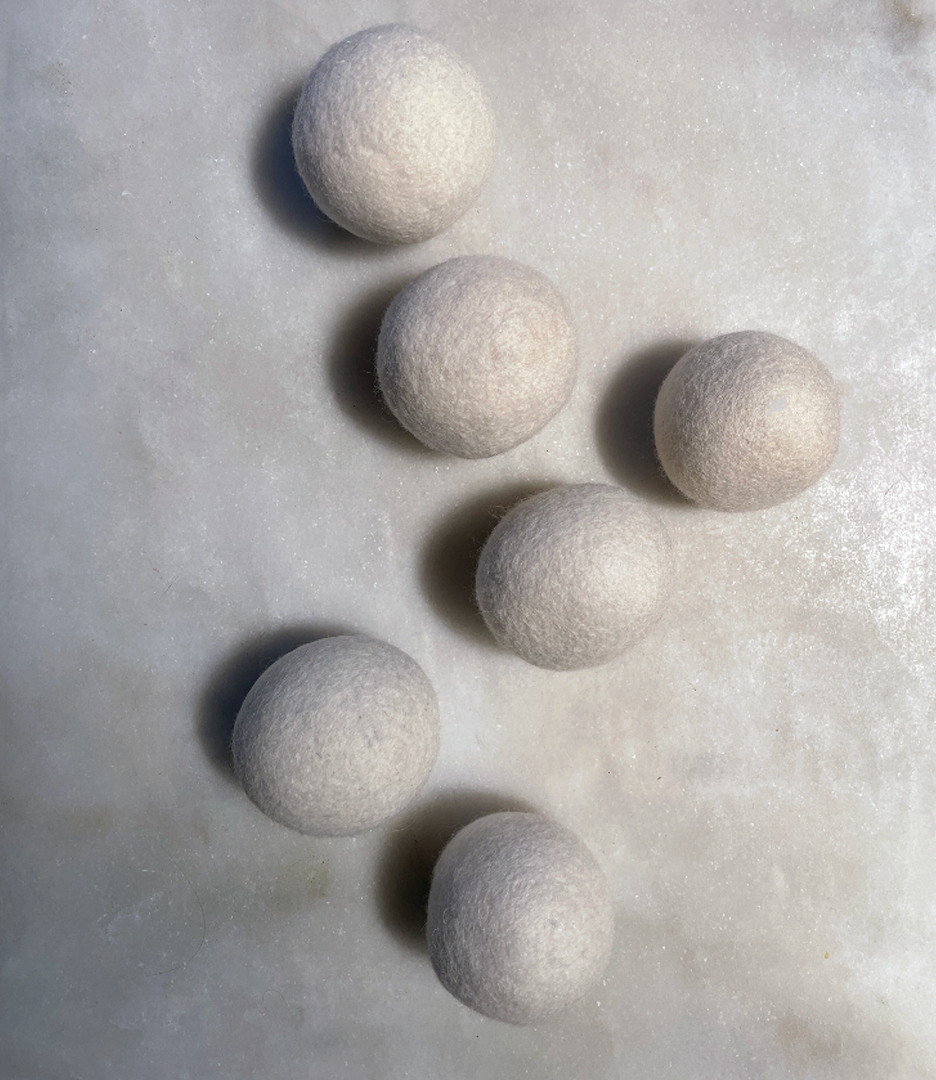Before I go into dryer balls, which have a surprisingly mysterious genesis, I’d like to start with the history of felted wool. Because felted wool is ancient.
Felting came much before weaving and other fiber arts. In order to produce felt, one just has to take some wool and add a little heat, pressure and moisture. It was so easy to make that an early Christian myth posits that Saint Christopher, patron saint of travelers, and his companion Saint Clement created felt by stuffing wool into their sandals as the fled from an angry Roman emperor around 300 AD. After running nervously for miles—so the story goes—the soon-to-be saints discovered that the sheep’s wool had mixed with their sweat and the fibers had fused together after the constant pounding from their anxious footfalls.

A thrilling tale, Saint Christopher’s woolen travels are relatively new compared to felt’s origin as the first fabric known to humankind. Some sources state that felt remnants found in Turkey date back to 6500 BCE.
What did the first makers of felt use this marvelous product for? You named it, armor.
Yes, it was used for shelter, clothing, decoration, and magic, but also armor. This was particularly important for Chinese armies around 1400 BCE, because at that point, their main rivals from Turkey were using felt as large overcoats that acted as armor against Chinese arrows[1]. Lesson: felt is tough.
For fashion, felt was huge. Nomadic cultures in 200 BCE wore bolts of felt wound around their bodies in order to stay warm in the cold and dry in the rain. It’s pliability re: animal skin and its ability to absorb moisture were particularly attractive qualities back in the days of yore. Second lesson: felt is not only strong, it is tough on moisture and protects against cold as well.
The ancient Greeks were also hip to felt fashion, and Xeres’ troops donned felt caps, called tiaras. Their rivals, the Trojans and other non-Greeks, wore slouching felt hats that would become known as the Phrygian Cap, made famous by French revolutionaries and the Smurfs. In the western tradition, these hats became synonymous with liberty and freedom.
Which brings me back to dryer balls. It’s no coincidence that those looking to free themselves of dryer sheets and fabric softener turned to a product composed of an all-natural fabric that was not only strong, but could handle the heat and absorb moisture. And that’s just how felted wool dryer balls work. Toss them in with your laundry and they slowly beat out water while naturally softening your clothes and absorbing excess water in the process. Because of this, they reduce drying time and keep hazardous chemicals out of the drying process.
Now, as the dearth ancient felt artifacts will attest, felted wool dryer balls won’t last forever, but if you aren’t looking for a 1000-year guarantee, a 1000 loads might suffice.
So, the next time you find yourself looking for an all-natural, chemical-free substitute to dryer sheets that saves on time, energy and money, think back to humankind’s roots and go with our all-natural, 100% felted wool dryer balls. Available now!
[1] Laufer, B. (1930). The Early History of Felt. American Anthropologist, 32 (1), 1-18.)


